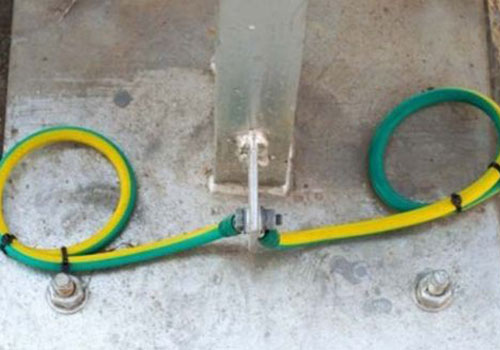A ground wire can be defined as "an element in a three-circuit system that gives excess electrical charge a safe way to escape the circuit".
As its name suggests, a ground wire connects the circuit to the earth.
The purpose of a ground wire is to protect a circuit from electric shock and possible fire. Outside the United States, grounding wires are often referred to as "ground wires".

Color coding is critical to electrical systems because identifying wires by color helps maintain safety in electrical work.
According to the U.S. color code for AC power circuit wiring, ground wires are green or green with a yellow stripe.
A green ground wire is more common than a ground wire with a yellow stripe, although both are found in homes across the country.
Note that in some rare cases, the ground wire has no color, although this technically violates U.S. color coding rules.
In these cases, the ground wire is just a plain, bare copper wire.
So, is a ground wire absolutely necessary? The ground wire is an important part of a three-wire circuit, along with the neutral and hot wires.
However, not every building has a ground wire installed, and older homes built before the 1960s that have not been renovated since then may not have a ground wire.
This is because the National Electrical Code requirements for ground wires were adopted in the early 1960s.
These devices are perfectly capable of operating without a ground wire because it does not provide electricity.
It is unlikely that an average homeowner would be able to tell that a ground wire is broken or missing.
However, the absence of a ground wire is dangerous because there is always the possibility of sudden danger. If a hazard occurs, the circuit breaker should trip to help eliminate the danger.
The ground wire is connected to the neutral wire in a three-wire circuit. As such, it provides a pathway for current to earth and plays a role in tripping the circuit breaker by combining with the neutral wire.
Although you may not know for years if you have a ground wire, surges that can lead to dangerous situations without one are much more common than we might think.
Electrical surges that could lead to potentially dangerous situations may occur as often as several times a day.
Electrical surges that do not find their way back to earth and instead escape through an appliance are common causes of fires.
Even more dangerously, touching an ungrounded plug can lead to a path of electrical current through the body.
If this happens, severe burns and even death are possible.

It is necessary to make sure that the appliances in your house have a working ground, especially if you live in an older house that has not been renovated in years.
It also doesn't hurt to have a professional check your circuit from time to time, as you can't be sure that the ground in your circuit is working properly.
If you're confident in your ability to check your outlets, there's an easy way to proceed.
Just remember that grounded appliances have three slots, while ungrounded appliances have only two.
However, if you don't have enough knowledge to do the check yourself, be sure to hire a professional.